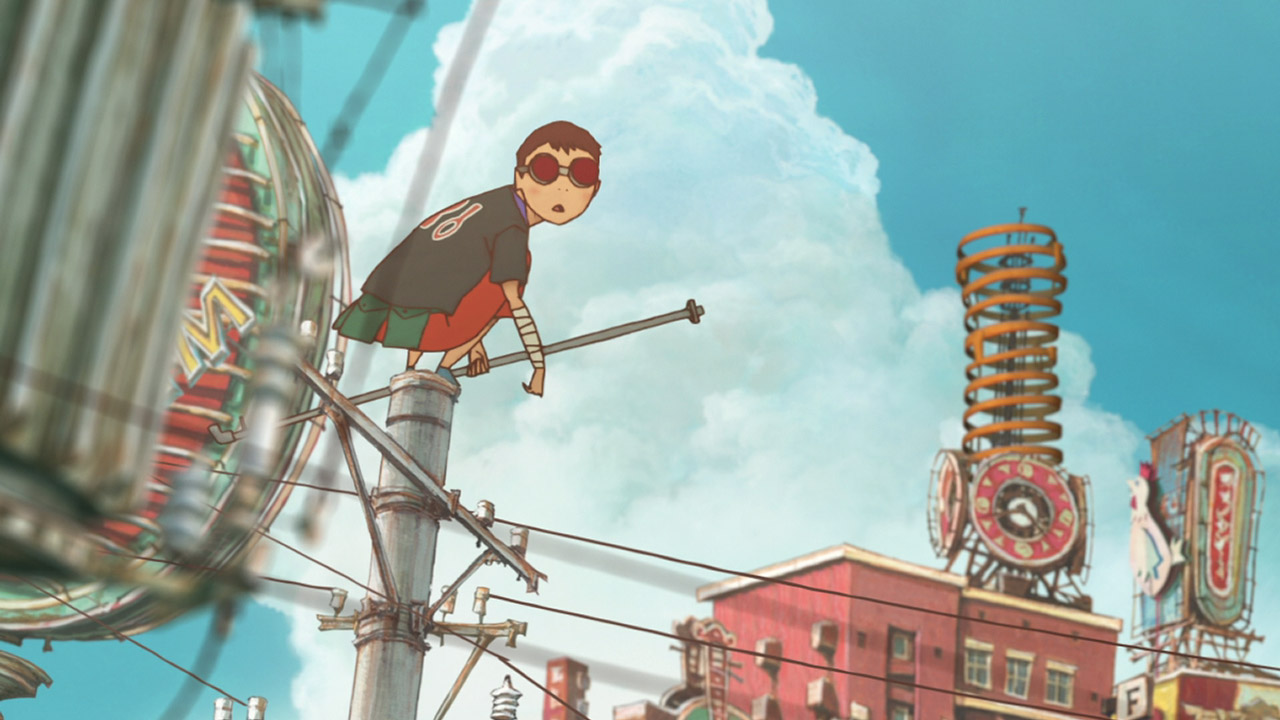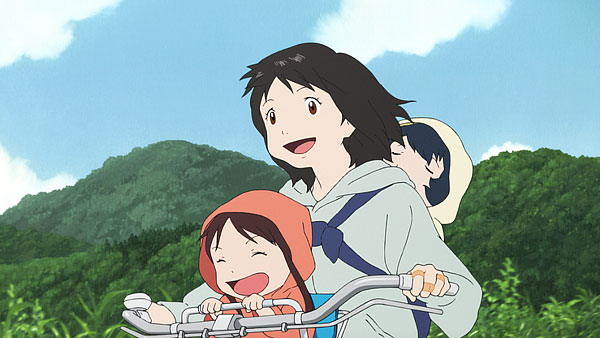
Though anime is any kind of animation in Japan, it is considered to be a style of Japanese film and television in the United States. In Japanese, the word for animation is アニメション ("animeshon") and was shortened to アニメ ("anime"). Because of this, it is pronounced the Japanese way: "a-nee-may."
What is the difference between Japanese and anime?
However, outside of Japan and in English, anime is colloquial for Japanese animation and refers specifically to animation produced in Japan. Animation produced outside of Japan with similar style to Japanese animation is referred to as anime-influenced animation . The earliest commercial Japanese animations date to 1917.
What is anime in English?
However, outside of Japan and in English, anime is colloquial for Japanese animation and refers specifically to animation produced in Japan. Animation produced outside of Japan with similar style to Japanese animation is referred to as anime-influenced animation .
What do they call Disney movies in Japan?
Taking this from another perspective, in Japan, Disney movies are referred to as "Disney Anime", This refers to a certain style, not the genre as a whole. The Japanese Wikipedia on "anime" specifically notesthat: アニメーションをアニメと略せる言語は日本語に限られるため、日本国外で「anime」という場合は日本製の表現様式のアニメに対して用いられる。 日本国内では、製作国や作風に関わりなくアニメが使用される。
What is anime-influenced animation?
These anime-styled works have become defined as anime-influenced animation, in an attempt to classify all anime styled works of non-Japanese origin. Some creators of these works cite anime as a source of inspiration, for example the French production team for Ōban Star-Racers that moved to Tokyo to collaborate with a Japanese production team.

Is anime a kind of film?
As a type of animation, anime is an art form that comprises many genres found in other mediums; it is sometimes mistakenly classified as a genre itself. In Japanese, the term anime is used to refer to all animated works, regardless of style or origin.
Is animation a film?
Animation is a method in which figures are manipulated to appear as moving images. In traditional animation, images are drawn or painted by hand on transparent celluloid sheets to be photographed and exhibited on film. Today, most animations are made with computer-generated imagery (CGI).
Are anime movies considered canon?
Most anime movies are surprisingly non-canon due to the fact that they never happened in the manga and even stray away from the plot of the actual anime. In most recent times, anime movies have started to stray away from filler movies.
Is film and animation the same?
The major difference between the two programs is while a pure animation program will focus primarily on developing animation filmmaking skills, film and animation programs typically focus on both animation and live-action filmmaking.
What qualifies as an animated film?
An animated film is defined as a motion picture in which movement and characters' performances are created using a frame-by-frame technique, and usually falls into one of the two general fields of animation: narrative or abstract.
Is anime a cartoon?
Cartoon. Japanese anime is different from cartoons. While both are caricatures that may be animated, anime usually has visually distinct features for characters, and a more "limited animation" style for depicting movement.
Why are anime movies not cannon?
An anime's “canon” refers to the story arcs and plot lines that were written by the author and featured in the first medium of that franchise, usually the manga. So a “non-canon” story is one that is not written by the original author and has no lasting impact on the series.
Will one piece red be canon?
One Piece Film: Red, like the previous 14 films in the series, will be a standalone story with no direct connection to the series. As a result, it will most likely not be referenced in the original canon series.
What is non-canon in anime?
Non-canon is content that is anime exclusive, meaning that the content isn't in the original manga making it non-canon. Filler can either add more depth to the show or completely miss the mark and make fans want to skip all filler.
Is it cartoon or animated film?
Animation refers to a technique of photographing successive drawings or positions of models to create an illusion of movement when the film is shown as a sequence. Cartoons can either refer to a drawing or a television program or film made using animation technique.
Is anime and animated the same thing?
Main Difference – Anime vs Animation Animation refers to the process of creating motion and change by displaying a sequence of static images that minimally differ from each other rapidly. Anime is a Japanese style of animation.
What was the first ever cartoon?
FantasmagorieUnsourced material may be challenged and removed. Fantasmagorie is a 1908 French animated film by Émile Cohl. It is one of the earliest examples of traditional (hand-drawn) animation, and considered by film historians to be the first animated cartoon.
How does anime differ from other forms of animation?
Anime artists employ many distinct visual styles. Anime differs greatly from other forms of animation by its diverse art styles, methods of animation, its production, and its process. Visually, anime works exhibit a wide variety of art styles, differing between creators, artists, and studios.
What is anime in Japanese?
Anime. Not to be confused with Amine. Anime ( Japanese: アニメ, IPA: [aɲime] ( listen)) is hand-drawn and computer animation originating from Japan. In Japan and in Japanese, anime (a term derived from the English word animation) describes all animated works, regardless of style or origin.
What is anime in the US?
English-language dictionaries typically define anime ( US: / ˈænəmeɪ /, UK: / ˈænɪmeɪ /) as "a style of Japanese animation" or as "a style of animation originating in Japan". Other definitions are based on origin, making production in Japan a requisite for a work to be considered "anime".
How much does an anime episode cost?
An anime episode can cost between US$100,000 and US$300,000 to produce. In 2001, animation accounted for 7% of the Japanese film market, above the 4.6% market share for live-action works. The popularity and success of anime is seen through the profitability of the DVD market, contributing nearly 70% of total sales.
What is anime in English?
However, outside of Japan and in English, anime is colloquial for Japanese animation and refers specifically to animation produced in Japan. Animation produced outside of Japan with similar style to Japanese animation is referred to as anime-influenced animation . The earliest commercial Japanese animations date to 1917.
What was the first anime?
Three Tales (1960) was the first anime film broadcast on television; the first anime television series was Instant History (1961–64). An early and influential success was Astro Boy (1963–66), a television series directed by Tezuka based on his manga of the same name. Many animators at Tezuka's Mushi Production later established major anime studios (including Madhouse, Sunrise, and Pierrot ).
How many companies are there in the animation industry?
The animation industry consists of more than 430 production companies with some of the major studios including Toei Animation, Gainax, Madhouse, Gonzo, Sunrise, Bones, TMS Entertainment, Nippon Animation, P.A.Works, Studio Pierrot and Studio Ghibli. Many of the studios are organized into a trade association, The Association of Japanese Animations. There is also a labor union for workers in the industry, the Japanese Animation Creators Association. Studios will often work together to produce more complex and costly projects, as done with Studio Ghibli's Spirited Away. An anime episode can cost between US$100,000 and US$300,000 to produce. In 2001, animation accounted for 7% of the Japanese film market, above the 4.6% market share for live-action works. The popularity and success of anime is seen through the profitability of the DVD market, contributing nearly 70% of total sales. According to a 2016 article on Nikkei Asian Review, Japanese television stations have bought over ¥60 billion worth of anime from production companies "over the past few years", compared with under ¥20 billion from overseas. There has been a rise in sales of shows to television stations in Japan, caused by late night anime with adults as the target demographic. This type of anime is less popular outside Japan, being considered "more of a niche product ". Spirited Away (2001) is the all-time highest-grossing film in Japan. It was also the highest-grossing anime film worldwide until it was overtaken by Makoto Shinkai 's 2016 film Your Name. Anime films represent a large part of the highest-grossing Japanese films yearly in Japan, with 6 out of the top 10 in 2014, in 2015 and also in 2016 .
What is anime style?
Many English-language dictionaries define anime as "a Japanese style of motion-picture animation" or as "a style of animation developed in Japan.". However, in Japan, the term "anime" does not specify an animation's nation of origin or style.
What is the difference between anime and cartoons?
Anime targets a vast audience, from kids to adults, while cartoons. mainly targets kids, with the exception of course of adults who likes to watch cartoons. Anime tackles themes for kids, teens and adults and have stories that have depth, while cartoons tackles more themes that are for kids.
What is cartoon mainly about?
Cartoons are mainly produced for kids, with topics about friendship, fun, exploration and similar things. Anime / manga and related media mainly are produced for targets of all ages (except for Hentai and Ecchi series, of course).
What is Disney Anime?
Taking this from another perspective, in Japan, Disney movies are referred to as "Disney Anime", This refers to a certain style, not the genre as a whole. The Japanese Wikipedia on "anime" specifically notes that:
Is anime considered regular?
"anime") or a broader one (e.g. "animated content"). Anime is not different from "regular cartoons", because "cartoon" covers anything at all animated.
Is Spongebob an anime?
So in this sense, at the very least, in English, not all cartoons are anime, because not all cartoons are Japanese. (Certainly it would be ridiculous for me to go around claiming that Spongebob Squarepants is anime to an English speaker.) It is still unclear whether "anime" is simply a subset of "cartoons".

Popular Posts:
- 1. a anime girl mermaids
- 2. how to make anime peeker stickers
- 3. how to draw an anime bear
- 4. are all anime characters white
- 5. how to make anime meat
- 6. where to watch bofuri anime
- 7. where to get cheap anime merchandise
- 8. what kind of anime would i be in quiz
- 9. do sunako and kyohei kiss in the anime
- 10. are anime movies called anime